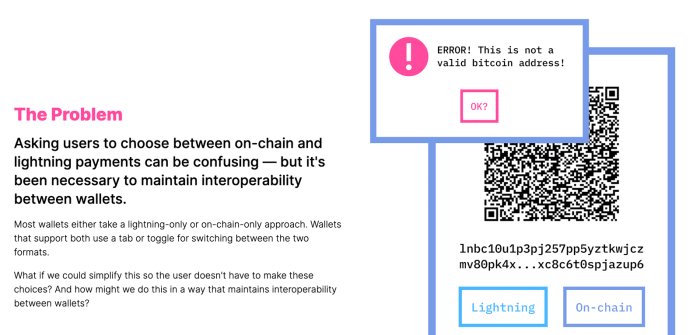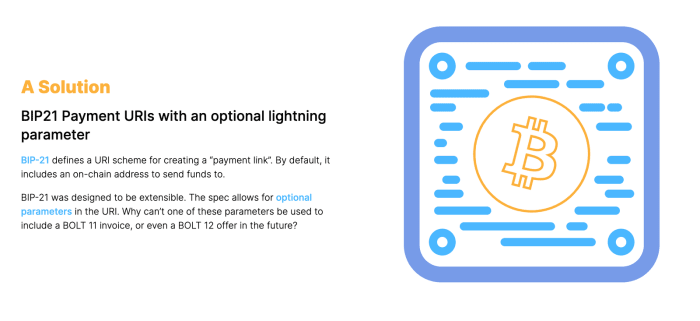The following is a direct extract from Marty’s Bent Issue #1181: “BIP21 is a given.“ Subscribe to the newsletter here.
Currently, there is a huge UX hurdle for users of different Bitcoin wallet software providers.
One of the most illuminating discussions at the Bitcoin Takeover event held at the Bitcoin Commons here in Austin last Friday was a panel discussion between Lisa Neigut (c-lightning, Blockstream), Rockstar Dev (Strike, which uses lnd) and Miles Suter (Cash App, which uses LDK) led by Matt Odell on the challenges of interoperability between different implementations and overall UX when using the Lightning Network. During the discussion (which should be made public soon), the panel touched on the topic of BIP21, a BIP that I didn’t know but got very excited about after figuring it out.
Currently, there is a huge UX hurdle for users of different Bitcoin wallet software providers. The UX around sending and receiving bitcoin transactions on-chain and through the Lightning Network. Some wallets are on-chain only, some on-only, and some allow users to use both but require you to manually switch between the two when sending and receiving. Enter BIP21, which aims to address this UX hurdle by giving users an option when sending. BIP21 would enable QR codes that allow wallet providers to include both a flash bill and an on-chain bitcoin wallet address in one place.
What it takes to push BIP21 forward as a standard is for more Lightning network wallets to start supporting it. Currently, when a bitcoin user using a BIP21-enabled wallet scans the QR code of a wallet that does not have BIP21 enabled, they receive an error code that can be confusing and cause friction. UX. If more Lightning Network wallets enable BIP21 and allow users who only send on-chain transactions to receive an on-chain fallback address, it would end this UX friction. The best part is that BIP21 is backwards compatible, so there’s no way to disenfranchise the comatose man who wakes up in a decade and broadcasts a transaction from a wallet he didn’t have. untouched for many years.
Beyond that, BIP21 allows users to make a conscious decision on whether they want to send over the protocol layer or the Lightning Network. If implemented, this should eliminate the need for different on-chain and LN UI tabs and make the transaction process much smoother between different wallets.
The first step towards realizing these benefits is to ensure that every wallet can read BIP21 QR codes. From there, each project can start creating experiences that allow users to generate BIP21 payment codes. You need to get wide support for scanning before it makes sense to get wide support for generating these payment codes. Here’s hoping wallet providers will make this a priority in the near future.

